
With going back to school on the horizon, it’s time to get organized and think about creating to-do lists that work for you!
Having spent 30 years in education, I have tried about a billion different types of to-do lists. All of them have some good things about them and some limits, so it’s good to try out different systems and then put something together that works best for you.
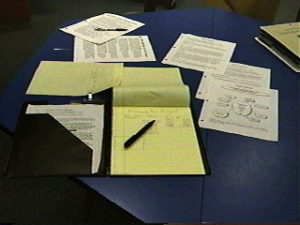


The top seven time-savers for me are:
1 – use ONE planner that works for me
2 – keep a running “brain dump” list
3 – organize your brain dump list
4 – make a systemized weekly routine list
5 – make a systemized daily routine list
6 – when making your weekly list, check your brain dump list for top priority items to be completed this week
7 – when making your daily list, identify your top three priority tasks to be done each day.



Here’s my system.
1 – you need a place to keep your lists. This can be a paper planner or a digital planner – whatever works best for you.
Some of my favorite paper planners are listed here:



*Erin Condren teacher planner – https://amzn.to/3eqtunX



*Schoolgirl Style teacher planner
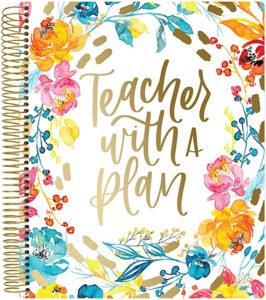


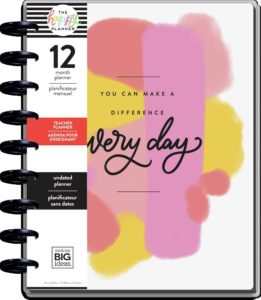


Another option is to create your own planner with a simple binder and paper. If you do this, you might want to use some printable planning pages. Here’s a link to my printables on Teachers Pay Teachers.



2 – use blank paper in your paper planner (or a new doc in your digital planner) to keep a running “brain dump” list.
A brain dump is simply a list of whatever comes to mind that you need or want to do. This is where you can add things whenever you think of them. It can be messy!
This isn’t your regular to-do list. This is a place where you can get all of the stuff that might be overwhelming you out of your head and onto the page where you can get it organized and then get it done.
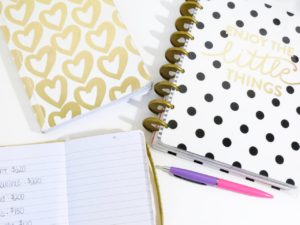


3 – next you can organize that brain dump list. Here are two ways to do that:
*use colored pens (like Flair pens) and label your tasks by priority, using ABC or 123 labels.
An A or 1 label = anything that is urgent (in terms of time frame) and important for you to do.
A B or 2 label = anything that is important, but not quite as urgent.
A C or 3 label = anything that isn’t urgent and might matter to you, but isn’t immediately important to do.
(A brain dump list is especially great for these items since they are written down and will probably eventually get done so they don’t keep coming to mind when you’re thinking about more urgent/important tasks. You can relax because they’re “on the list”.)
*use highlighters. You could prioritize your tasks the same way, but just use highlighters to indicate the different priorities.



4 – develop a systemized weekly routine list. This one tip has saved me lots of time.
To do this, think about your typical week.
Write down your weekdays as column headings.
You probably have planning meetings, team meetings, faculty meetings, etc. and they are all scheduled for the same day and time every week. Write these meetings down under the day they are scheduled.
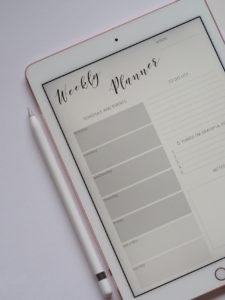


Next, think about all the things you need to do every week. Maybe you want to have all ELA prep done on a certain day, all math prep done on another day, for instance. Maybe you have to turn in lesson plans to an administrator by a certain day. Whatever the things you need to do, list them under the appropriate day.
For example: if you have two meetings on one day, that probably would not be a good day for getting anything “extra” done. Be realistic. (I try to complete administrative and paperwork tasks on faculty meeting day. Those kinds of tasks can often be done in small bits of time and don’t take quite as much thinking work as lesson planning and grading takes.)



5 – Next, create a systemized daily to-do list, just like you did for the weekly list. What are your tasks that have to be done daily? Maybe you need to update the next day’s slides or materials, make notes about the next day’s reading groups or math groups, make copies, check off student work, do some straightening or cleaning. Whatever it is — make a daily list for each day of the week.
Each day’s tasks might have some of the same items on them, but some will be different. For instance, if you or your team send a weekly email to families, that might happen on a Friday or a Monday. Maybe it needs to be written on a Thursday or a Friday. Add those tasks to the particular days on which they need to be done.



A caution: be realistic. Try to keep these daily lists to no more than five to seven items. Or you could put an asterisk beside any items that are “would be great to do but the world will go on if you don’t do them”.
Remember that unexpected tasks or events will often get in the way. So starting with a pared-down and realistic systemized daily list is very important.



6 – As you create your weekly to-do list, you will check both your brain dump list (for the high priority items to be done this week) and your systemized weekly list. Look for where you can add the brain dump items to this week’s list. Some weeks you will be able to add items and some weeks you won’t. That is fine! Remember that the brain dump list is there so help keep all those tasks listed so they don’t keep cluttering up your mind.



7 – now for the daily list.
First, we need to identify the top three priority tasks. Take a look at your weekly to-do list and your systemized daily routine list for the day. Then identify the top three tasks you absolutely have to get done that day. Highlight or star those items, write them on a sticky note and pop them on your computer, whatever you need to do to keep those top priority items in mind.
Once you have completed those priority tasks, then get going on any of the other daily tasks.



To review this system:
1 – choose a planner that works for you and stick with it.
2 – start a “brain dump” list.
3 – prioritize your brain dump list.
4 – make a systemized weekly routine list (this list will be used every week. Although you can tweak it, this only has to be done one time.)
5 – make a systemized daily routine list (these lists will be used each day. Although you can tweak it, these only have to be created one time.)
6 – make your weekly to-do list, checking your brain dump priority items, and adding them to your systemized weekly lists.
7 – make your daily to-do list, identifying your top three priority tasks for the day (these may be things from your systemized daily list for the day), then add your other systemized daily routine tasks.
Remember that you can get my printable lists HERE!
